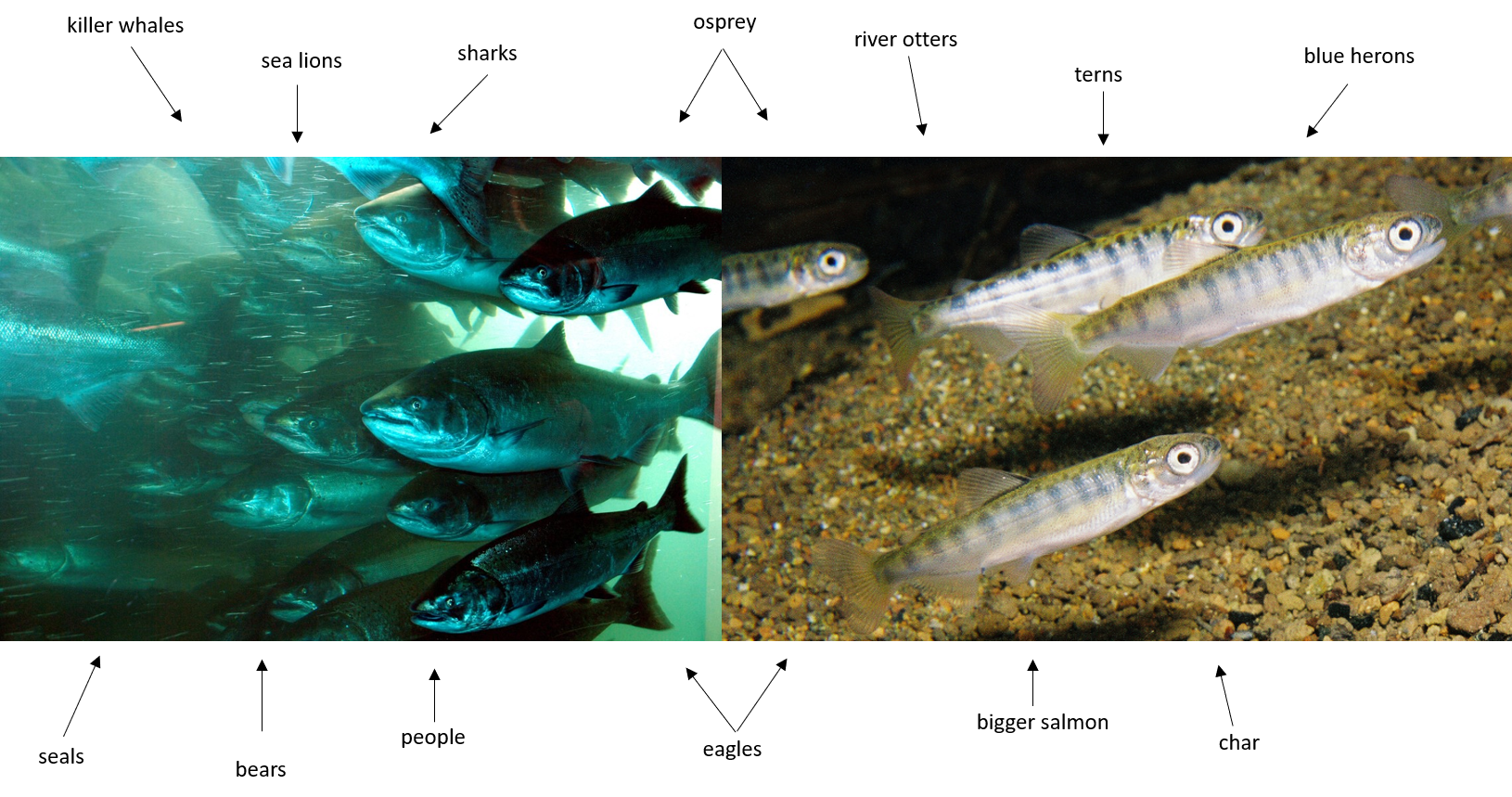In July of 2015 water temperatures sky-rocketed to 73°F at Bonneville Dam, killing salmon as they were trying to migrate inland to spawn. The effects of this mass die-off are still rippling through the ecosystem today.
As salmon migrate upriver, they provide food for all kinds of critters including bald eagles, bears, and people. After spawning, the adult salmon die and their bodies feed the river by providing nutrients to microorganisms and insects, which in turn provide food for the salmon fry when they hatch.
The fry spend six months to several years in their native river, eating things and being eaten, until they swim out to the ocean where they continue to participate in the food web. At least 138 species eat salmon as part of their diet!

With salmon playing a critical role in the ecosystems of the Pacific Northwest, the EPA has set river temperature goals that support salmon health as they incubate, grow, migrate, and spawn. In recent years, Oregon rivers, including the Willamette, often exceed those goals during summer months.
Lack of shade and increased erosion are two reasons the Willamette gets too hot for salmon. As people have developed land along the river, we have taken out trees on the banks. Without that shade, more sunlight is reaching the water’s surface and warming it up. Another consequence of building in the valley is that more sediment gets washed into the river. In fact, in urban areas like Keizer, construction can cause 35 times more sediment to erode into waterways than in a natural, undisturbed landscape! All that extra dirt makes the water cloudy, allowing it to absorb even more heat.
You can help keep our waterways, and salmon, cool by protecting and restoring riparian habitats. If you live along a waterway, keep a vegetated buffer along its edge. Established vegetation along banks provides shade over the water and slows down erosion. Healthy river banks support prosperous salmon populations, and healthy salmon are a cornerstone of our local ecosystem.
Sources: https://wdfw.wa.gov/publications/00063 & USGS Water Resources
